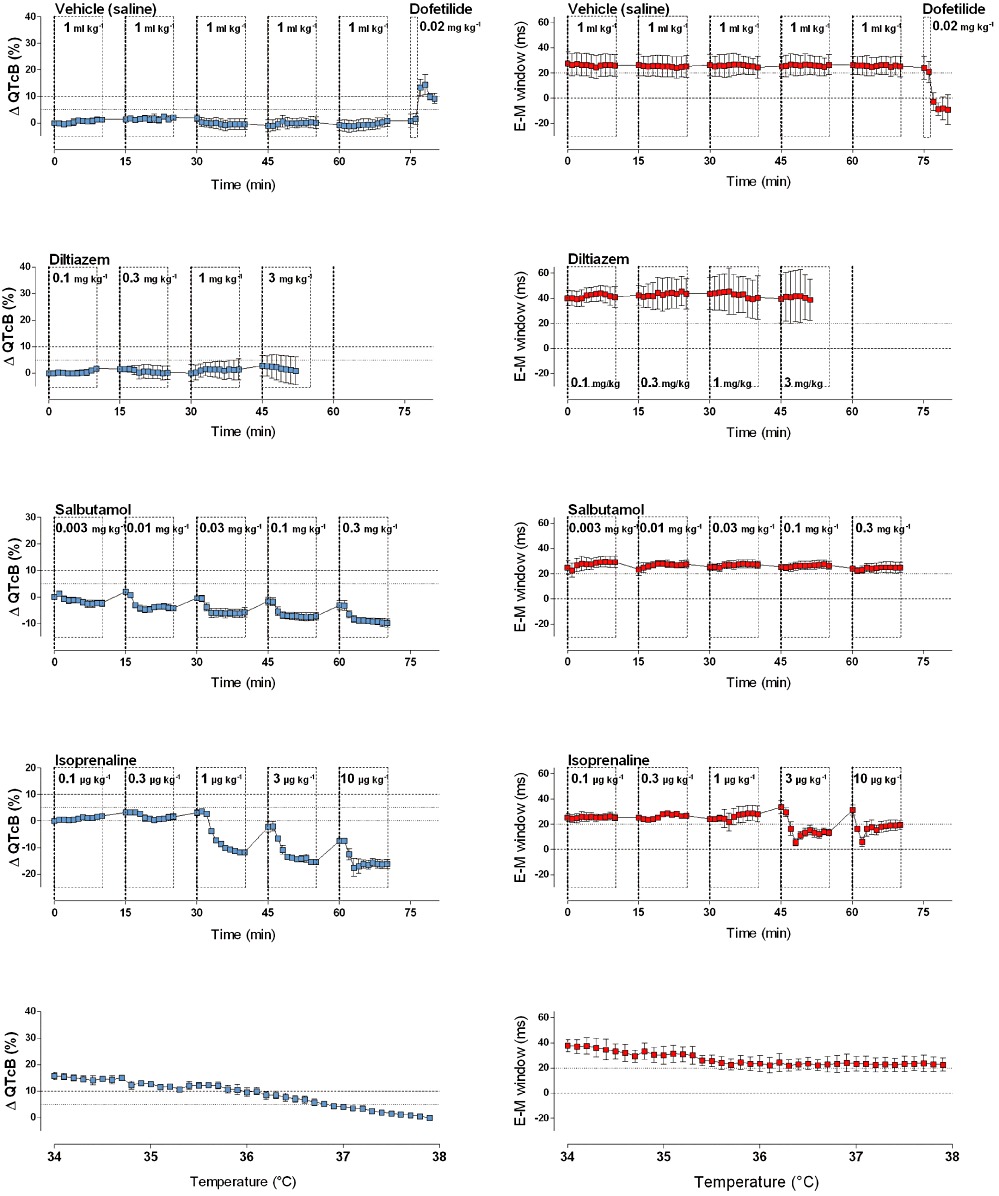Figure 4.

Plots show the effects of vehicle, of drugs with no TdP risk (diltiazem, salbutamol), of isoprenaline and of changes in body temperature (lowest graphs) on the commonly used surrogate marker for TdP risk (QTcB, % change from baseline; in blue) and on the E-M window (ms; in red). The vehicle did not cause QTcB prolongation or shortening of the E-M window. Salbutamol and diltiazem, respectively, increased and decreased heart rate (data not shown), but did not affect the E-M window. Isoprenaline transiently reduced the E-M window due to the different kinetics of its effect on the QT and QLVPend interval. Finally, cooling of anaesthetized animals from 38°C to 34°C prolonged the QTcB interval (−14.6 ms·°C−1), but had no major effect on the duration of the E-M window. Graphs show mean ± SEM.
